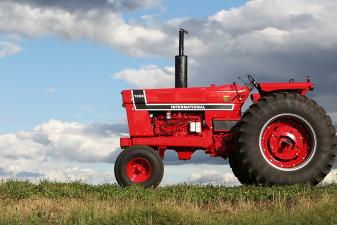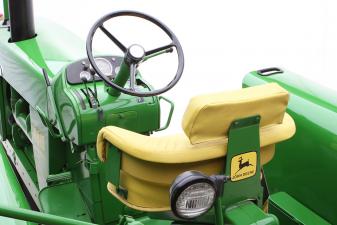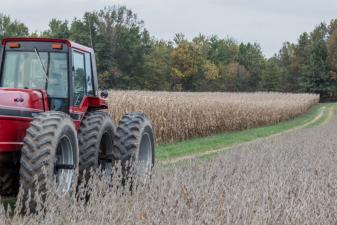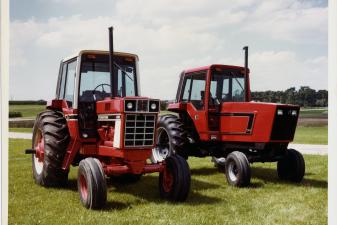Betting the House on the 30/50 88 Series

The '70s–'80s were a tumultuous time for International Harvester. Between the transitions in leadership, the 1979 labor strike (and the ensuing 5-month halt in production), and the astounding 40% drop in profit, the company needed a life raft to survive the hard times. One such life raft, which would continue to float them for decades to come, was newly-appointed CEO Archie McCardell's decision to invest heavily in new technology. From this investment came the STS transmission and the 50 Series tractors. Read all about the introduction of the 50 Series in this excerpt from our latest book, TRACTOR, by Lee Klancher.
When Brooks McCormick took over the helm at International Harvester Company in the 1970s, hope was high that the founder’s descendant would lead the company in the right direction. McCormick made a number of smart moves that helped the company tremendously, including investing in technology, doing some smart reorganization, and cutting back on less-profitable product lines.
One of the much-debated moves McCormick made was to hire Archie McCardell away from Xerox to be the new IH CEO (and pay him a record-setting salary). McCardell changed up the management ranks, brought in ruthless cost-cutters, and fought bitterly with organized labor. The latter led to the infamous 1979 strike, which shuttered IH manufacturing from November 1979 to April 1980, and gained not an inch in negotiation.
Although McCardell was clearly terrible dealing with labor, that strike didn’t hurt quite as badly as it might have. The farm market tanked about the same time the United Auto Workers went on strike, so the lack of production didn’t cost IH as much in sales as one might expect.
He also wasn’t able to change the fact that IH’s profit margin was dismal. When McCardell started in 1977, John Deere ran at a 7.1 percent margin, Caterpillar was at 7.9 percent, and IH was at 3.4 percent. Those numbers were about the average for each company for the 1970s, and all would drop in 1980. John Deere stayed positive at a 1.1 percent profit, Caterpillar dropped to -2.8 percent, and IH clocked in a horrendous -38.2 percent.
The move McCardell made that paid off—for decades to come—was to invest heavily in new technology. Doing so in tough times required a gambler’s swagger, and McCardell had no shortage of that. The red tractor line desperately needed a new transmission, and if the company had any hopes of regaining the number one slot in the market (or, for that matter, holding on to number two), then it needed an exciting new model.
The STS transmission was a new design that would not share any parts with Harvester’s previous designs. “When we say ‘all new,’ we mean we started at the engine flywheel and went from there through the entire powertrain and all of its auxiliary components, including hydraulics,” said Glenn Kahle, the engineering vice president at that time, in a 1981 interview published in Diesel Progress magazine. IH invested more than $200 million to bring the new transmission to production.
George Vater was the lead engineer on the 50 series transmission. “We started the 50 series tractor right there with a clean sheet of paper and we just started working on everything that we could do to make the tractor more reliable, give us plenty of power to grow,” Vater said. “We had many reliability improvements that we made, because we wanted this tractor to last and we wanted to have good reliability.”Early design sketch for the new IH series. Gregg Montgomery Collection
Although the STS transmission was a huge part of the 50 series tractors and contributed to its excellent fuel efficiency, other notable features included operator comfort, a fuel-saving demand compensating hydraulic system, and an innovative cooling system that helped keep the engine at optimal temperature.
The 50 series tractors were equipped with Melrose Park’s proven 400 series engines, and the chassis featured a unique forward air-flow design that pushed cooling air out of the cowling in the front. This new system was pioneered by the Advanced Engineering Group on the TX-178, which had the radiator mounted behind the engine.
The 50 series tractors was introduced in September 1981 as 1982 models, and they did raise the bar for high-horsepower two-wheel-drive tractors. Unfortunately, this was not an easy time to sell tractors, and International was fighting the terrible market as well as massive issues with obtaining financing. The debt load and the market were wreaking havoc with red tractors.
While the 50 series was being introduced, the engineers at Hinsdale were continuing to create and test new tractor designs. In fact, they had the makings of the next machine on the books, even as the time (and money) left for International Harvester was coming to a close.The 5088, 5288, and 5488 were the larger models in the line. Lee Klancher / Gustafson Collection
The 3288, 3488, and 3688 were also introduced as 1981 models. The 3688’s 436-cubic-inch six-cylinder was good 90 PTO horsepower. Lee Klancher / Monis Collection
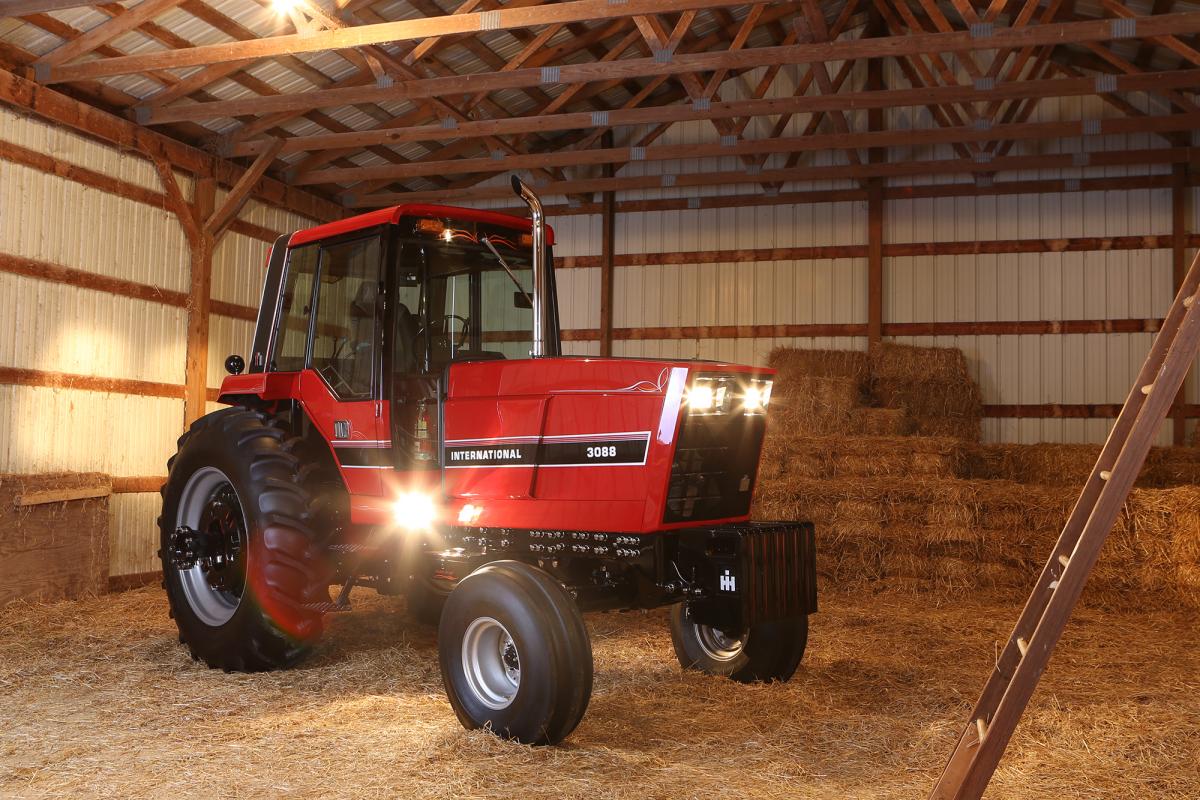 This 3088 (same as pictured in banner image) is owned by Mark Parker. The tractor has been heavily chromed and is stunningly finished. Lee Klancher / Parker Collection
This 3088 (same as pictured in banner image) is owned by Mark Parker. The tractor has been heavily chromed and is stunningly finished. Lee Klancher / Parker Collection


